사용자 제어 및 효율성을 우선시하는 핵심 원칙을 적용하여 Wear OS에서 미디어 환경을 설계합니다.
일관되고 예측 가능
UI 패턴을 정렬하고 일반적인 상호작용을 위한 새 UI를 만들지 마세요.
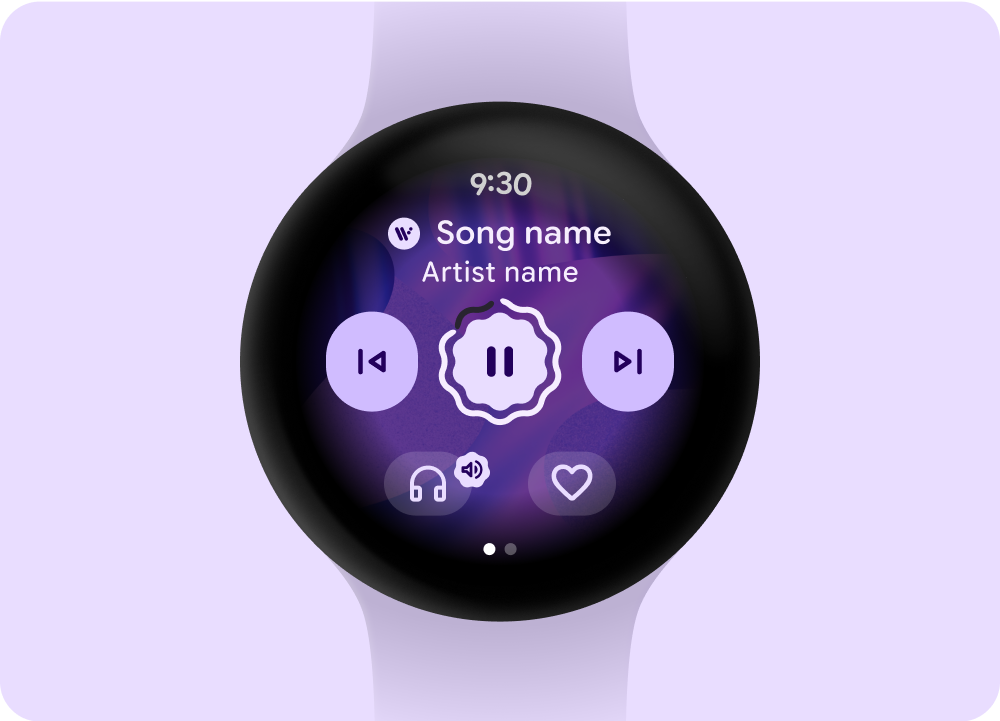
한눈에 보기 및 중요
사용자가 시계에서 미디어 탐색 및 재생을 제어할 수 있도록 중요한 컨트롤과 콘텐츠를 명확한 정보 계층 구조로 표시합니다.
현재 기기 볼륨 또는 연결된 출력 기기와 같은 동적 상태를 반영합니다.
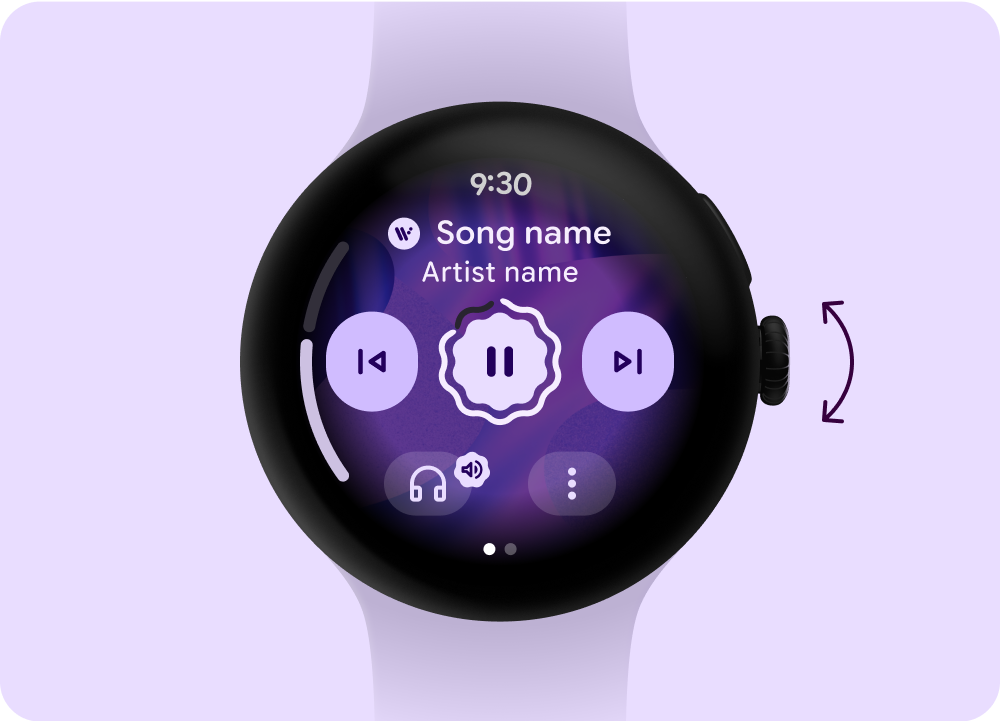
빠르고 일관성 있음
온보딩과 공간 기억 용량이 필요한 숨겨진 동작이나 상호작용 패턴은 피하세요. 사용자를 추가 기능으로 명확하게 안내하는 시각적 어포던스를 인라인으로 제공합니다.
시스템 및 앱 UI가 원활하게 통합되어 사용자가 컨텍스트 간에 표시된 화면을 탐색할 때 중복된 화면이 표시되지 않는지 확인합니다.
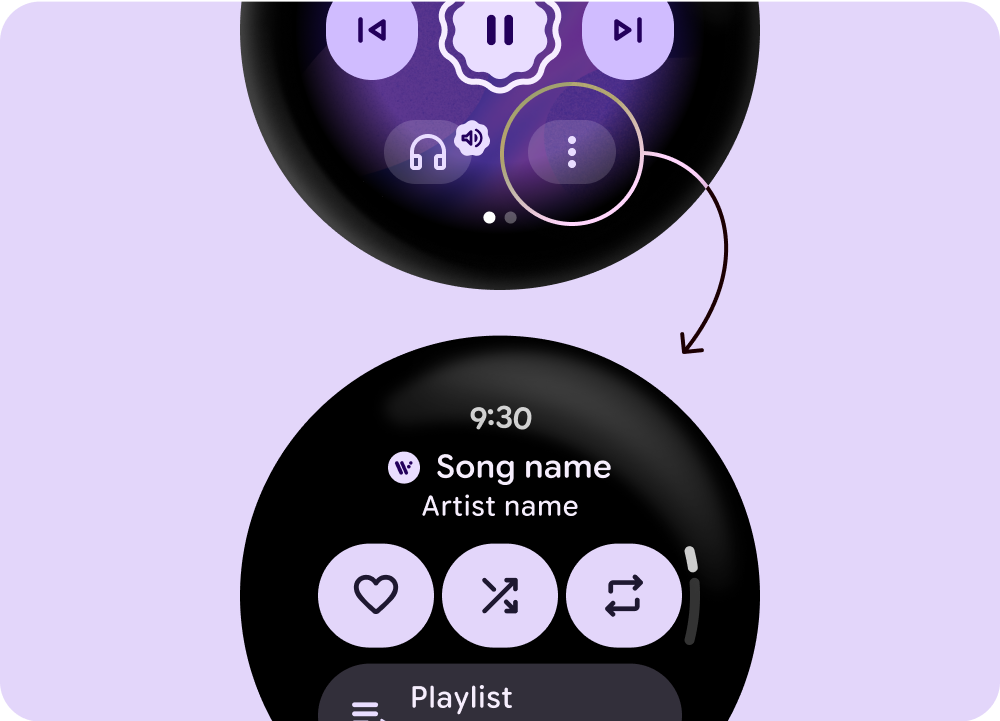
일반적인 디자인 패턴
다음 섹션에서는 Wear OS의 미디어 환경에 관한 일반적인 디자인 패턴을 설명합니다.
더보기 버튼
더보기 버튼을 사용하여 일관된 탐색과 더 많은 기능을 제공합니다.
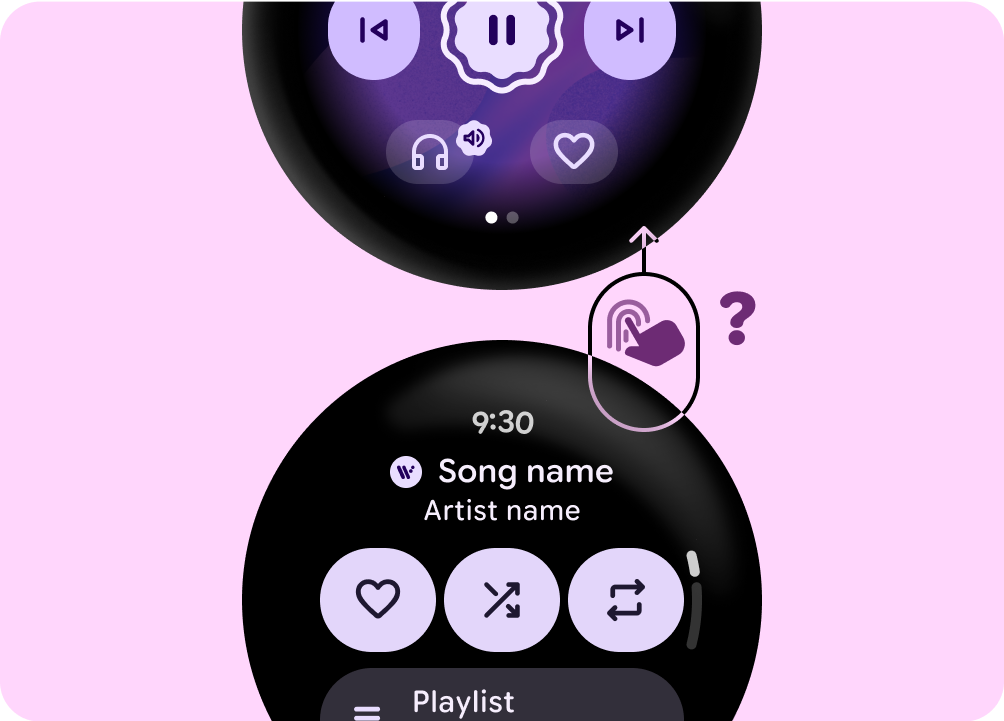
금지사항
사용자가 탐색을 기억해야 하는 숨겨진 동작에 의존합니다.
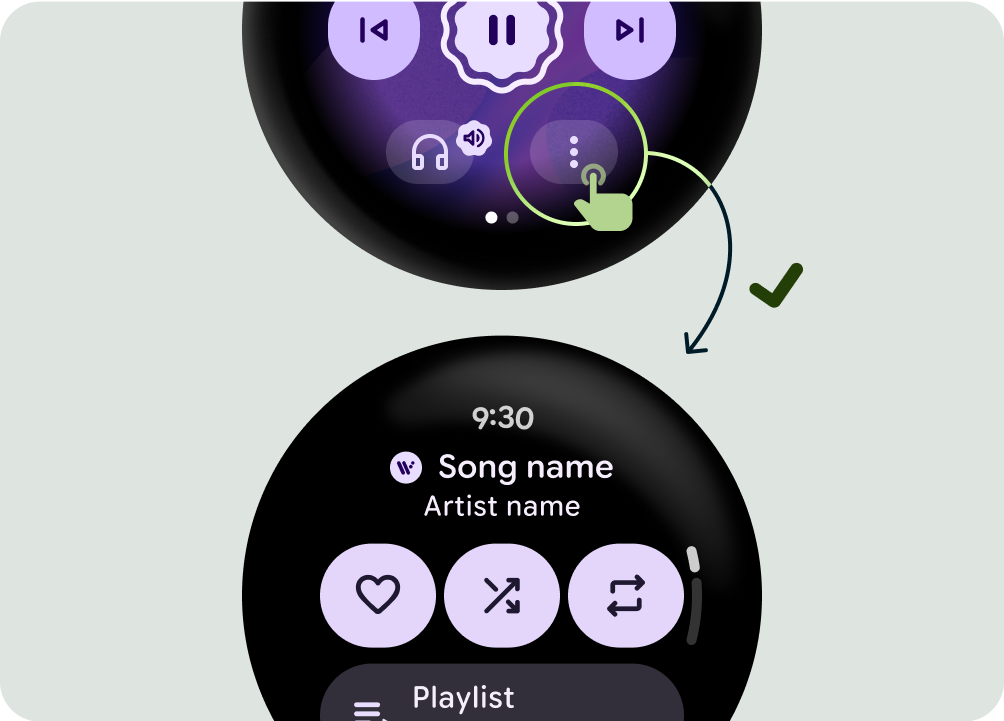
권장사항
사용자가 추가 기능에 액세스할 수 있도록 눈에 띄는 더보기 버튼을 제공합니다.
미디어 옵션에 대한 일관된 액세스
미디어 표시 경로와 컨텍스트 전반에서 기능에 대한 일관된 액세스를 제공합니다.
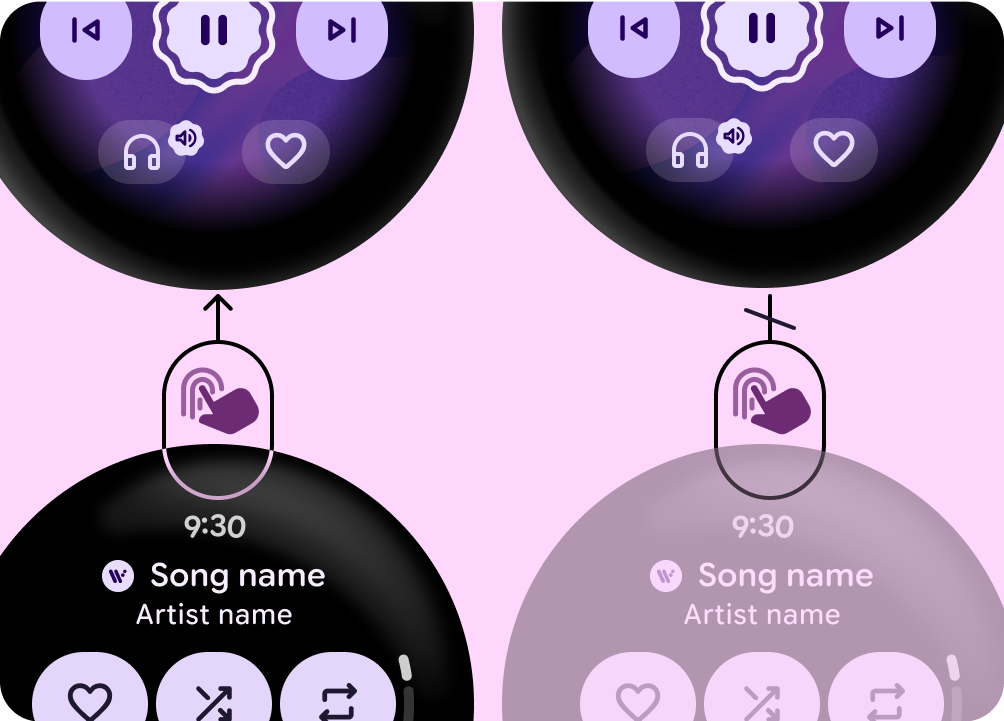
금지사항
미디어 표시 경로와 컨텍스트 전반에서 미디어 컨트롤의 패턴이 일관되지 않으면 사용자가 혼란을 느끼고 인지 부하가 발생합니다.
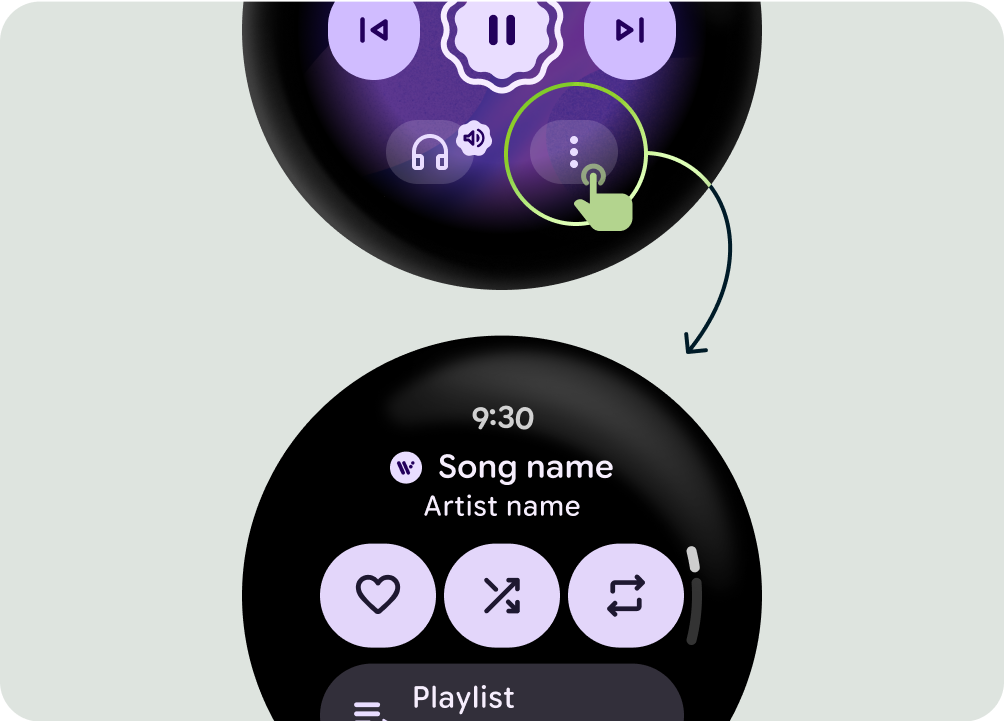
권장사항
미디어 표시 경로와 컨텍스트 전반에 걸쳐 일관된 패턴을 제공합니다.
볼륨 제어
어포던스 탭, 볼륨 바, 하드웨어 컨트롤과 같은 키 볼륨 컨트롤 상호작용을 사용하여 중요한 볼륨 작업을 실행할 수 있는지 확인합니다.
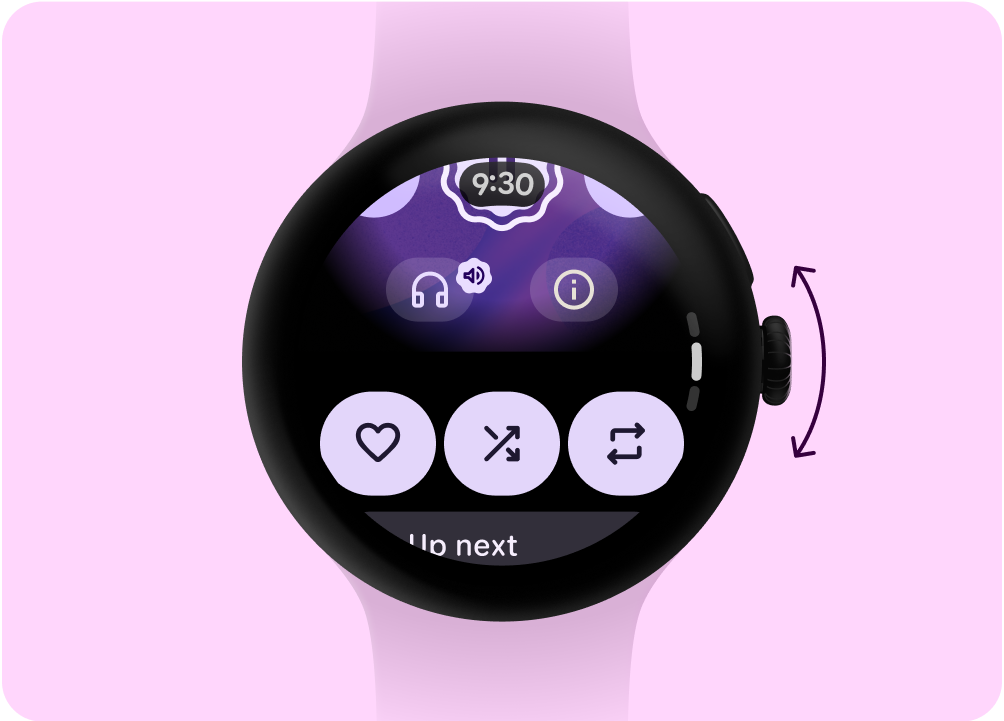
금지사항
사용자가 하드웨어로 볼륨을 제어할 수 없으면 혼란스러워집니다.
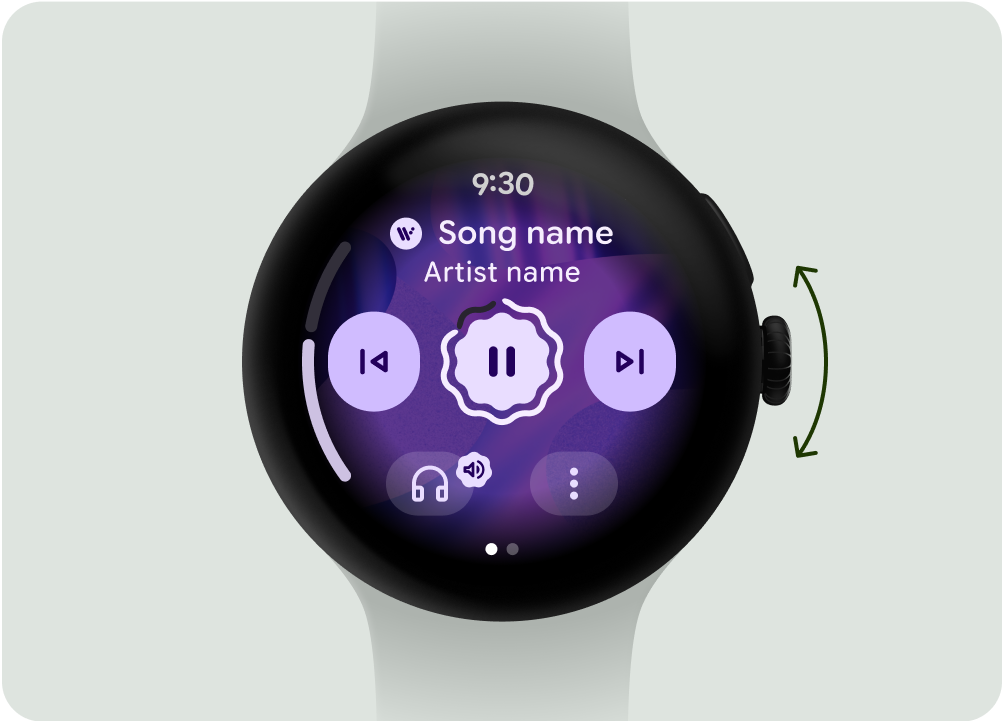
권장사항
사용자가 하드웨어 크라운으로 볼륨을 제어하도록 허용
출력 기기
사용자가 미디어 재생을 듣는 데 사용하는 기기를 명확하게 보여주는 아이콘을 사용합니다.
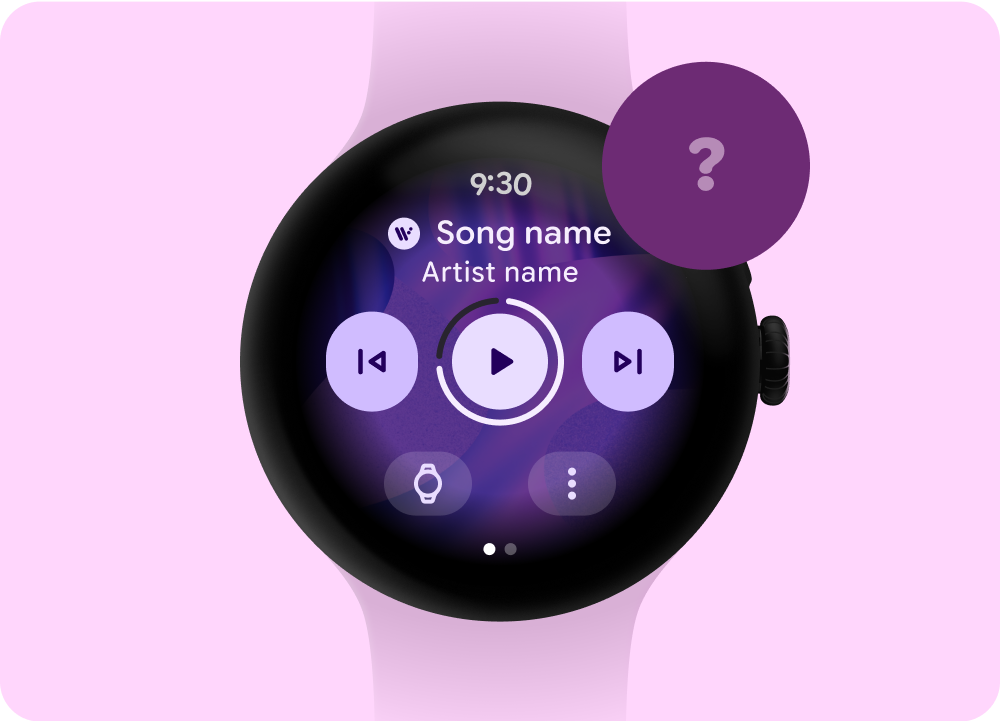
금지사항
아이콘에 소리가 나오는 위치와 볼륨을 제어하는 위치가 반영되지 않음
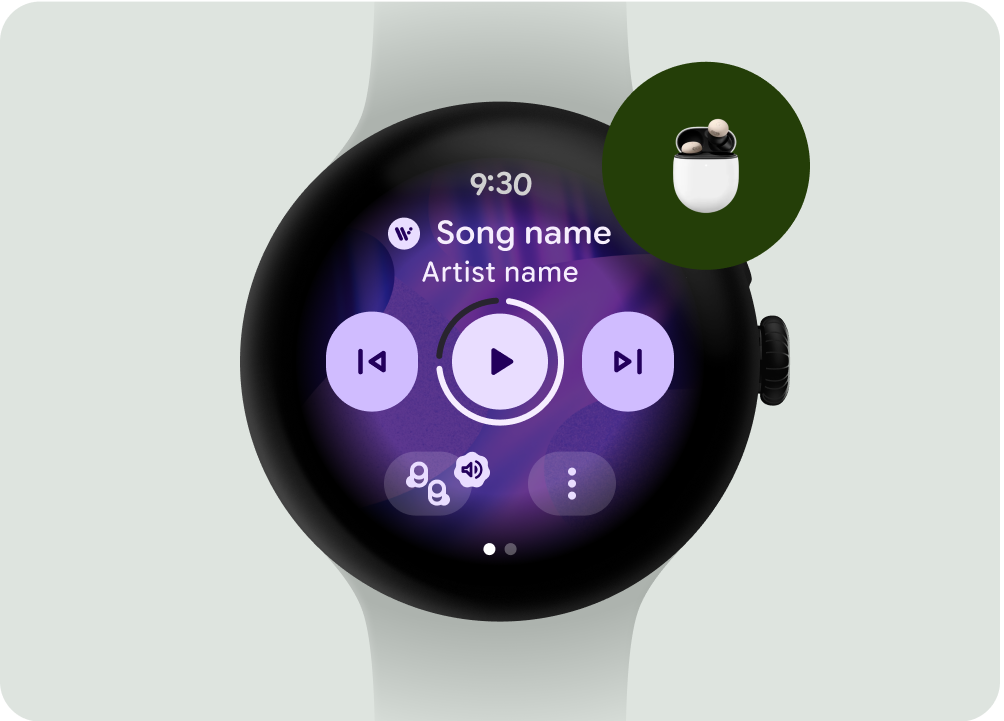
권장사항
볼륨 컨트롤 표시로 출력 기기 상태 반영
여러 기기에서 확장
기기 간 일관성을 고려하고 기존 패턴을 사용하여 더 예측 가능하고 일관된 사용자 환경을 만드세요.

